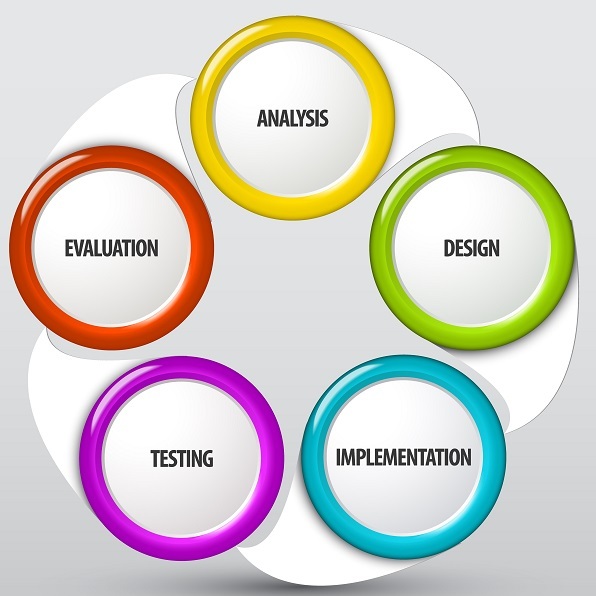
 Data Structure
Data Structure Networking
Networking RDBMS
RDBMS Operating System
Operating System Java
Java MS Excel
MS Excel iOS
iOS HTML
HTML CSS
CSS Android
Android Python
Python C Programming
C Programming C++
C++ C#
C# MongoDB
MongoDB MySQL
MySQL Javascript
Javascript PHP
PHP
- Selected Reading
- UPSC IAS Exams Notes
- Developer's Best Practices
- Questions and Answers
- Effective Resume Writing
- HR Interview Questions
- Computer Glossary
- Who is Who
Popular Methodologies of Business Process Reengineering
Introduction
Business Process Reengineering is a management strategy that initiates a complete process and structural change leading to a drastic rise in business outcome. It is all inclusive of process redesign, change management and comprehensive transformation of business operations Structural transformation to changes in fundamental objectives and vision of the company might also be subject to change. Careful and meticulous examination of critical data from every functional unit and from the organization as a whole is crucial to ensure successful implementation of BPR avoiding pitfalls.
The aim of BPR efforts should ideally lead to lower costs, reduced time cycles, high quality, customer satisfaction and competitiveness. BPR is thus a complex process and a highly effective and systematic approach to implementing a reengineering project is of vital importance. Different popular methodologies that have developed over the time for process reengineering are discussed here.
BPR Methodologies
Every stage of BPR project requires methodologies and tools to be followed to ease the process and deliver optimum results. As no business is similar, methodologies and tools adopted for BPR implementation should also be based on the scope and objectives of operation. A thorough clarity in understanding the concepts of reengineering is crucial to choose the methodology relevant for each organization. Business process modelling and analysis methods like activity based costing are employed based on the fundamental analysis for redesigning new processes. Other technology based tools such as process mapping, analysis reports, and flow charts are developed and used towards achieving BPR objectives.
Model for Designing and Prototype
A methodology for designing new process and creating a prototype was put forward by Davenport in 1993. This is a six step technique that upholds information technology as the apex of a BPR initiative. Davenport restricts the redesign of only up to 15 processes a time. Analyzing the ways by which technology can add value to prospective processes makes the soul of this approach. However, this methodology ends with the designing and prototyping phase and does not contribute to implementation and validation of BPR activities.
Hammer and Champy's model
Michael Hammer and James Champy proposed a comprehensive model of reengineering in 1991, with mobilization, diagnosis, redesign and realisation being the main stages involved. The steps involved in this approach demonstrate ?
Mobilization ? Where the top management who triggers the process should introduce and convince the people involved, explain the existing position and the requirement for introducing a BPR activity.
Diagnosis ? Exact identification of process across all functional business units is the major activity that shapes a redesign. Sufficient information gathered through inputs from all units concerned can help in developing process flow diagrams to visualise, identify duplications and proposing corrections where needed. After identification of data the problematic areas can be isolated easily though in depth analysis.
Redesign ? The processes that can be easily revamped and those that can bring substantial benefit out of revamping are to be given priority while redesigning.
Realization ? This is the implementation phase where the newly reengineered processes are put in place. The viability and outcome of the revamped process is monitored and addressed at this stage.
BreakPoint Methodology
Coopers & Lybrand introduced a model where the first two stages of Hammer's approach are clubbed together. The three major parts of this method are Discover, Redesign and Realise. Each of these parts is sub divided into four to five modules and those are again divided into tasks. It included tools and techniques for basic consulting, effective process and resource utilization, organizational and change management.
Rapid Reengineering Model
Manganelli & Klein devised a step-by-step guide that focus on those processes that are vital to attaining strategic goals. However, clear distinction has not been made for the first three areas under this approach.
This model starts with gathering information from parties involved to plan further targets and setting objectives
Selection of main areas that require redesign
Analysing the existing performance of such functional units and determine the result to be achieved after reengineering.
Allocating IT infrastructure and developing technology aided process and work systems for employees
Efficiently implement the reengineered processes.
Enterprise Engineering Methodology
Enterprise Engineering by James Martin tries to combine Total Quality Management (TQM) procedures with redesign, strategy and reinventing value. The model propounds to choose these based on the level of change initiated in the BPR activity. Enterprise engineering techniques are also taken into consideration in this approach. Technology development towards infrastructure and cultural development under human resource management are also seen with vital importance.
Kodak Methodology
This methodology was developed by Kodak organization to be applied to all its facilities across the globe. According to this approach,
The process is well planned after clearly defining all BPR procedures.
Assign a strong BPR team and develop an exhaustive process map for reengineering.
Redesign with a pilot implementation plan of the new process
Active implementation and allocate adequate infrastructure based on the new requirement under each process units.
This step is generic and has to operate in all other stages in parallel. Here the BPR team should be involved to remove all barriers that might come in the way of the overhauling process.
BPR Life Cycle Methodology

A comprehensive methodology of BPR that is based on inputs from the above methodologies framed the Life Cycle approach of BPR. Developed by Minder Chen of George Mason University, this method breaks down a BPR project into interlinked stages. Goals and deliverables of each of these phases are explicitly defined and are governed by structured methods and BPR tools. The phases that constitute this methodology are ?
Business Vision ? A proper long term vision should be in place for any business entity to compete in the global dynamic market. Only a practical and futuristic vision can create productive reengineering plans. It should be developed taking into account inputs from all parties involved.
Identification ? Information gathered from the entire inter-intra departments will help to identify and isolate the problematic areas that require change. BPR team is responsible for this task with the help of process mapping.
Analysis ? After identification and selection of a process for redesign, the reengineering team has to carry out extensive analysis to find the specific process changes needed for optimization
Redesign ? Technology is applied to chalk out parallel designs that can be adopted for the reengineering project. Constructive ideas from the technical team are crucial to bring out new and creative designs.
Evaluate ? Flawless evaluation will help the team choose the perfect design that could increase productivity with lesser costs.
Implement ? This is another key phase where the structured and controlled activities of redesigning are put to practice. Careful implementation is vital for the success of any BPR activity.
Improve ? Monitoring with performance indicators and continued process improvement should be in place.
Conclusion
Methodologies help to simplify the complex process of reengineering and aids to better implementation. BPR does not limit to improving the current processes involved in business, but a complete overhaul of the entire organization. Holistic and competent approach to identify, collate, evaluate and analyse the existing system is essential to redesign the activities.

